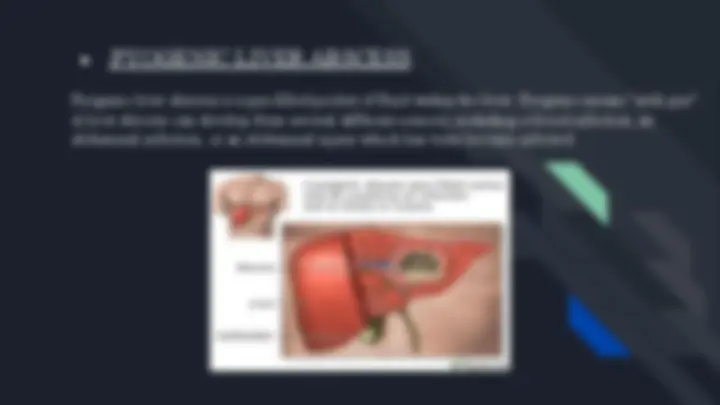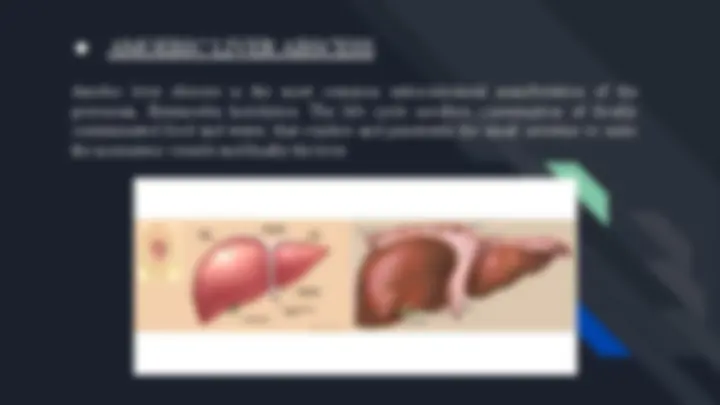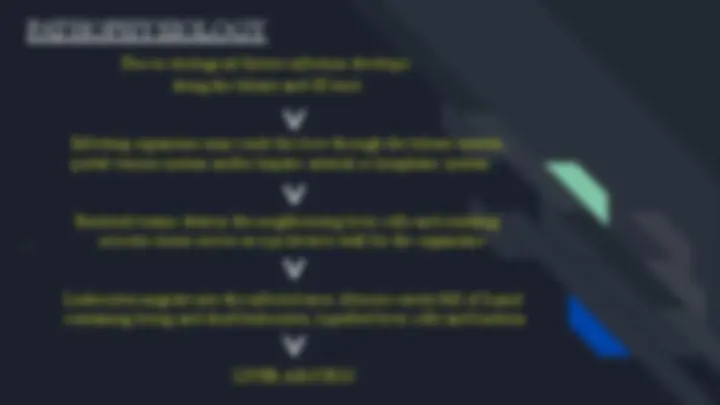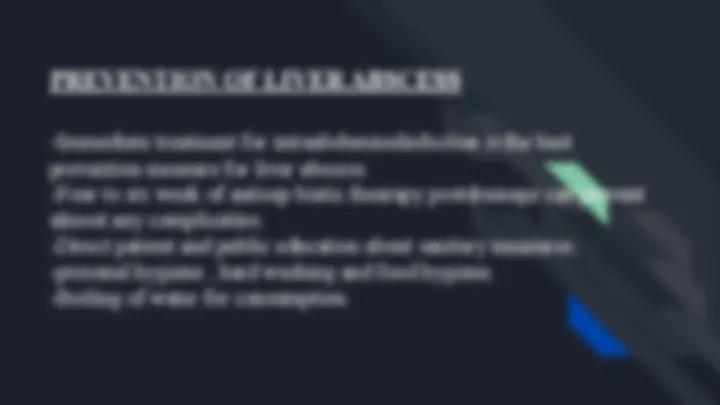











Study with the several resources on Docsity

Earn points by helping other students or get them with a premium plan


Prepare for your exams
Study with the several resources on Docsity

Earn points to download
Earn points by helping other students or get them with a premium plan
Community
Ask the community for help and clear up your study doubts
Discover the best universities in your country according to Docsity users
Free resources
Download our free guides on studying techniques, anxiety management strategies, and thesis advice from Docsity tutors
LIVER detailed notes bsc nursing 2nd year With diagram very useful for your examination and knowledge.
Typology: Schemes and Mind Maps
1 / 15

This page cannot be seen from the preview
Don't miss anything!










FROM B.SC. NURsING 2 nd^ year
REPRESENTED TO RESPECTED Mrs. ANAMIKA SINGH Mam
DEFINATION- A liver abscess is a collection of pus in the liver caused by bacteria, fungai or parasites. or
● PYOGENIC LIVER ABSCESS
Pyogenic liver abscess is a pus-filled pocket of fluid within the liver. Pyogenic means "with pus". A liver abscess can develop from several different sources, including a blood infection, an abdominal infection, or an abdominal injury which has been become infected.
● AMOEBIC LIVER ABSCESS
Amebic liver abscess is the most common extra-intestinal manifestation of the protozoan, Entamoeba histolytica. The life cycle involves consumption of fecally contaminated food and water, that reaches and penetrates the small intestine to enter the mesenteric vessels and finally the liver.
CAUSES AND RISK FACTORS
There are many potential causes of liver abscesses, including:
● Abdominal infection such as appendicitis, diverticulitis, ora perforated bowel. ● Infection in the blood. ● Infection of the bile draining tubes. ● Recent endoscopy of the bile draining tubes. ● Trauma that darmages the liver. ● Amebic dysentery. ● Immune deficiency. ● Metastatic liver cancer. ● Endocarditis. ● gallbladder stones.
PATHOPHYSIOLOGY
Due to etiological factors infection develops along the biliary and GI tract.
Infecting organisms may reach the liver through the biliary system, portal venous system and/or hepatic arterial or lymphatic system.
Bacterial toxins destroy the neighbouring liver cells and resulting , necrotic tissue serves as a protective wall for the organisms.
Leukocytes migrate into the infected area. Abscess cavity full of liquid containing living and dead leukocytes, liquefied liver cells and bacteria.
LIVER ABSCESS
DIAGNSTIC EVALUATIONS
● History collection. ● physical examination. ● Abdominal CT scan. ● Abdominal ultrasound. ● Bilirubin blood test. ● Blood culture for bacteria. ● Complete blood count (CBC). ● Liver biopsy. ● Liver function tests. ● White blood cell count.
TREATMENT
● Medician can help treat an infection caused by bacteria , a fungas ,or a parasite. ● Needle aspiration is a procedure to drain fluid with a needle. ● Catheter draining is a procedure to through a catheter inserted into an incision. ● Surgery may be needed if the abscess is large or bursts.
PREVENTION OF LIVER ABSCESS
COMPLICATIONS-
● Biliary tract infection chalangitis in biliary. ● Obstruction ,acute chalecystities. ● Diverticultis, appendicitis. ● Endocardities, bloodstream infection. ● Trouma. ● Postoperative conditions.